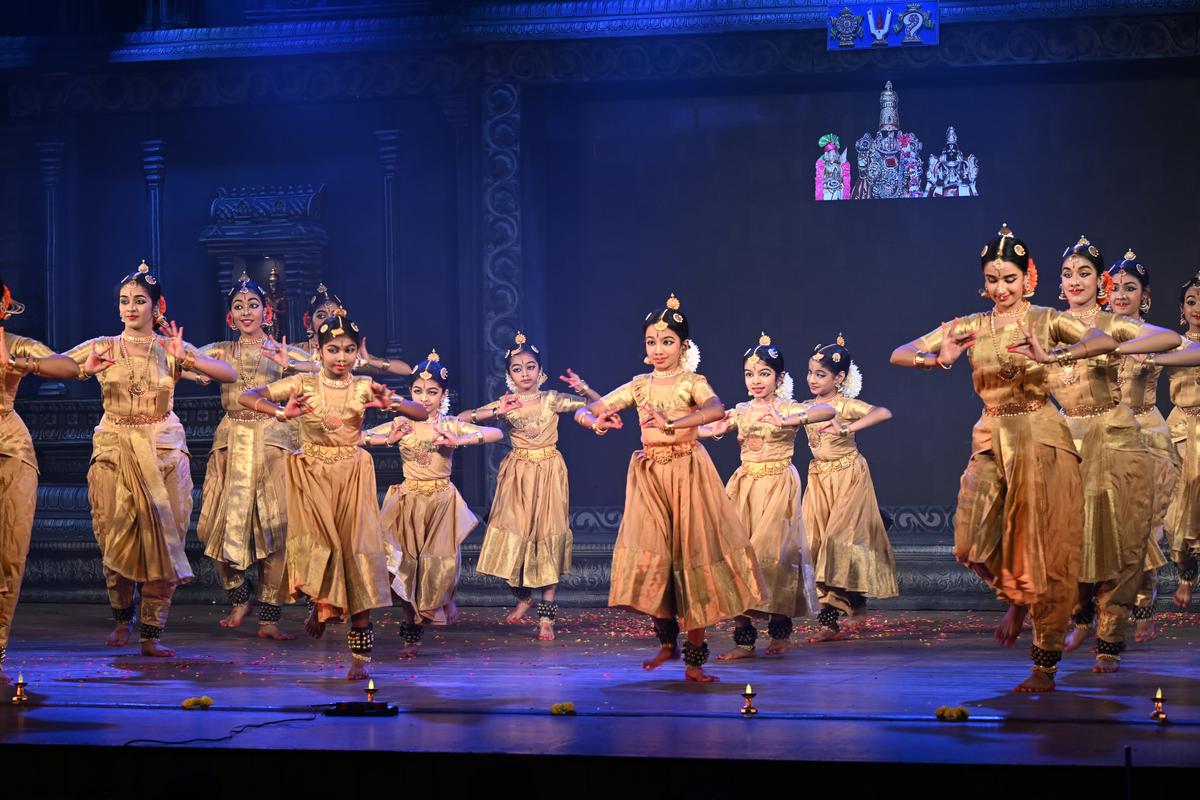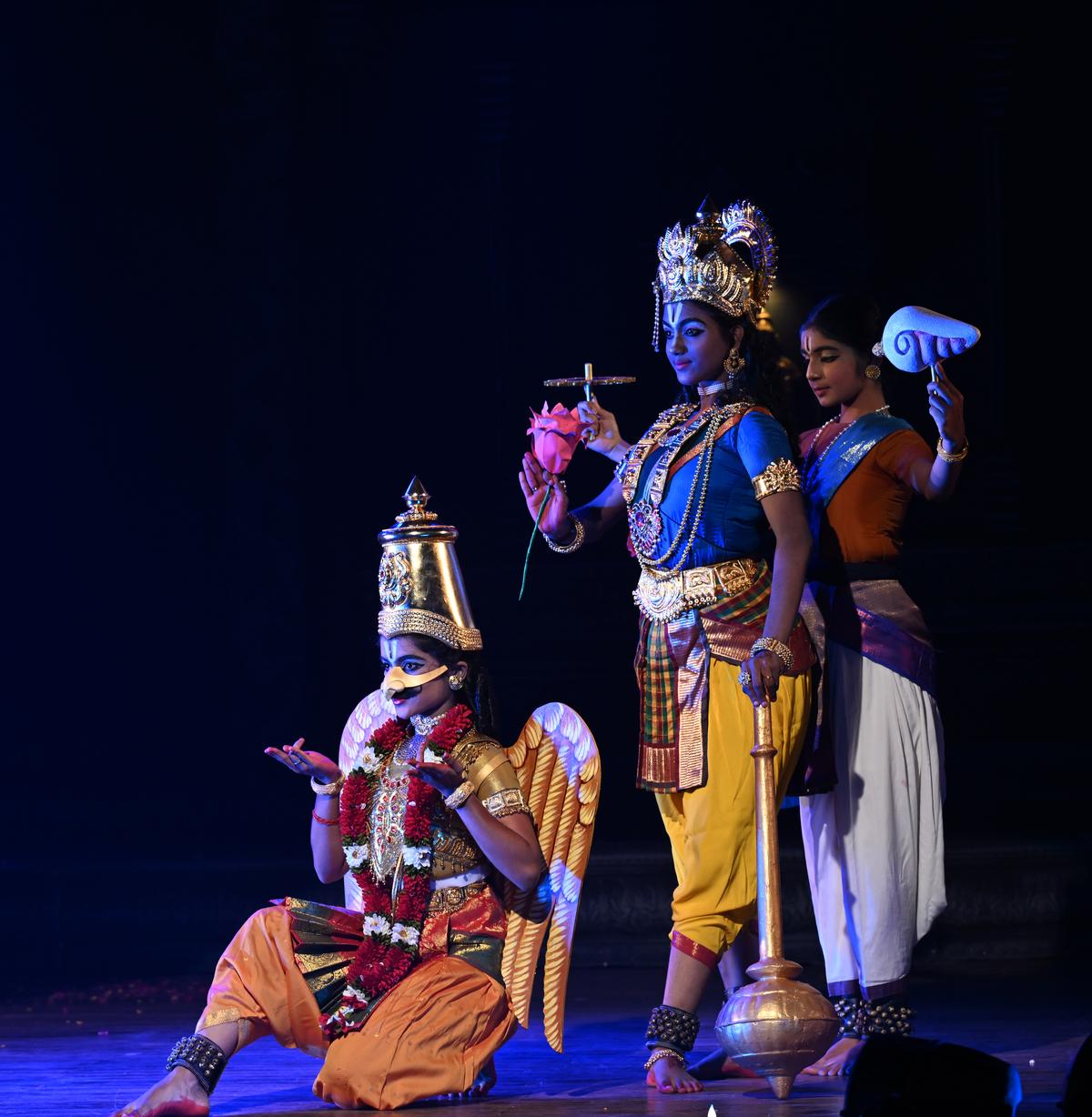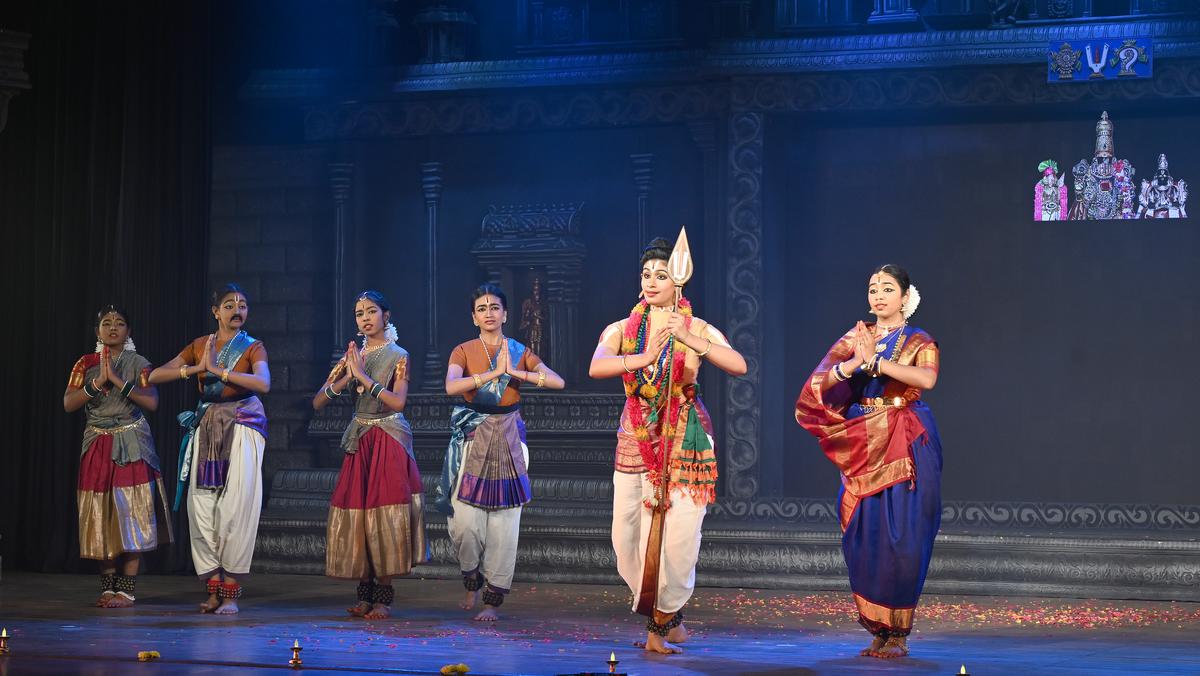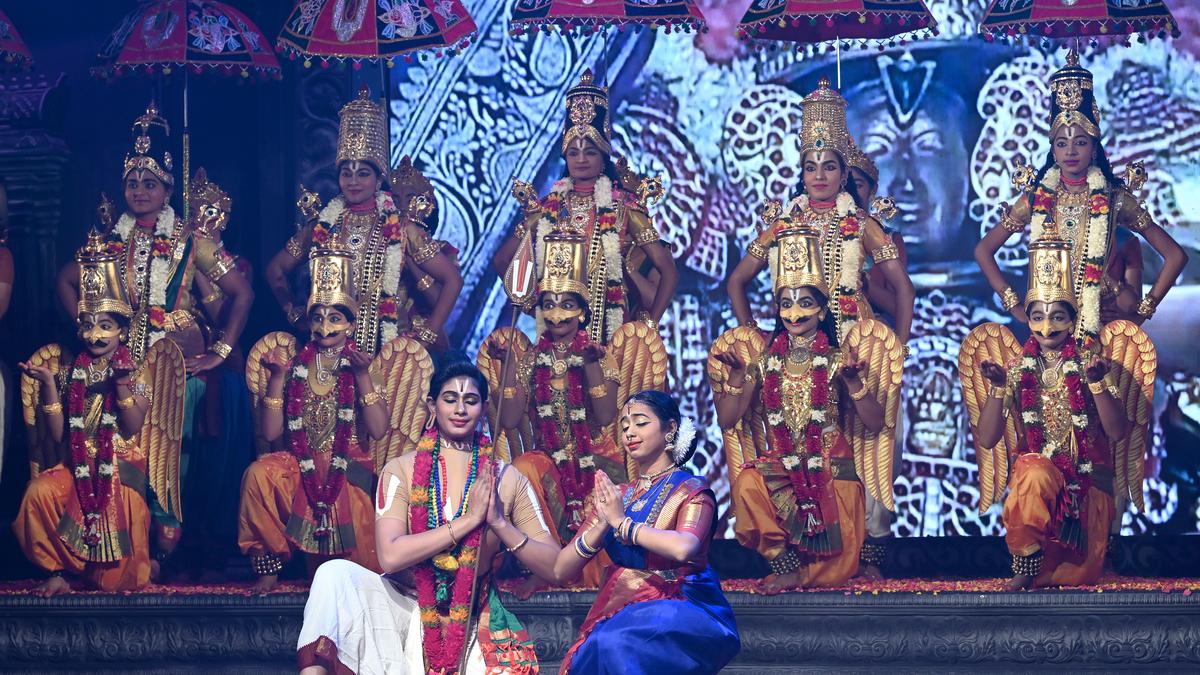‘Ekadasa Vishnum’ was the celebration of the 11 Tirunangur Divya Desams. | Photo courtesy: M. Srinath
For Asha Krishnakumar, it is an annual ritual. Every year, she picks a Vaishnavite theme and translates it into a full-fledged multimedia Natya Nadakam after extensive research. Choosing 11 Vishnu temples referred to as Tirunangur Divya Desam, which are a part of the 108 Divya Desams, she recently presented ‘Ekadasa Vishnum’ at the Narada Gana Sabha under her banner Darshanam Art Creations.
Conceptualised and curated by Asha, this grand spectacle was conceived by Sheela Unnikrishnan along with her Sridevi Nrityalaya students. Music was composed by Rajkumar Bharathi, Sai Shravanam worked on the soundscape, Mallola Kannan did the narration and chants, Chitra Madhavan, Rangan Bhattar, Vedrajan and Damal Ramakrishnan were the script consultants, Murugan did the lighting and Chella Videos handled the creative LED display. Shanmugam was behind the beautiful temple set up.
The eleven temples were divided into smaller clusters, highlighting their association with the legends of Rama, Krishna, Thayar, Perumal, Varadar and Srinivasa.

The beautifully choreographed ‘Ekadasa Vishnum’ featured over 70 dancers | Photo credit: M. Srinath
The thandavam performed by Shiva and the 11 Rudras (emerging from his hair follicles) in the opening scene depicts Shiva’s fierce form with dramatic effect. The early life of King Tirumangai Mannan and his transformation into Thirumangai Alwar form the introductory narrative, after which the performance moves around the regions with the Alwar and his wife Kumudavalli Nachiyar.
The pride of the ruler while feeding thousands of devotees every day, the dilemma he faces when his treasury is empty, the cunning ways of the robber, and the transformation of the king into a sublime state of submission when he meets the Perumal, are all depicted vividly in the choreography and performance of the scene.
It was indeed commendable that Sheela kept the audience’s interest throughout and created an interesting presentation, despite the limited information available about the sthalam Puranas of the temples. The stories or events related to the deities like Govardhana Giri, Varaha Avataram, Rama Ravana Yuddham and Sempon Sei were briefly introduced in each part of the presentation.

Ekadasa Vishnum was a combination of excellent choreography, music, lighting, costumes, stage settings and make-up. | Photo courtesy: M. Srinath
Working with over 70 dancers is no easy task, Sheela not only did it well but also remembered each dancer’s name while making announcements during the curtain call. This commitment was evident in every segment. Entries, exits, coordination of movements and precise expressions flowed effortlessly.
The rapid change in scenes and costumes (a combination of Bharatanatyam attire and costumes belonging to the characters) was fascinating. Video projections between each scene introduced the audience to the architecture and history of the temples, which helped in understanding the narration.
The music was a blend of Carnatic and Hindustani ragas and included popular compositions like ‘Sri Lakshmi Varaham’ and ‘Varadaraajam Upasamahe’. The chanting at regular intervals added to the spiritual ambience and enhanced the whole experience.

‘Ekadasa Vishnum’ was conceptualised and choreographed by Asha Krishnakumar at Narada Gana Sabha Hall in Chennai. Photo courtesy: M. Srinath
The final scene was undoubtedly the highlight of ‘Ekadasa Vishnum’. It featured the Garuda Seva festival of Tirunangur, where all 11 forms of Vishnu come together. Starting with a beautiful depiction of the swan vehicle on which the Alvar and Nachiyar arrived, the introduction of each form of Vishnu and Garuda in a well-choreographed sequence using a combination of twos and threes was fascinating. The finale, which saw all 11 dance together, left the audience in awe.
